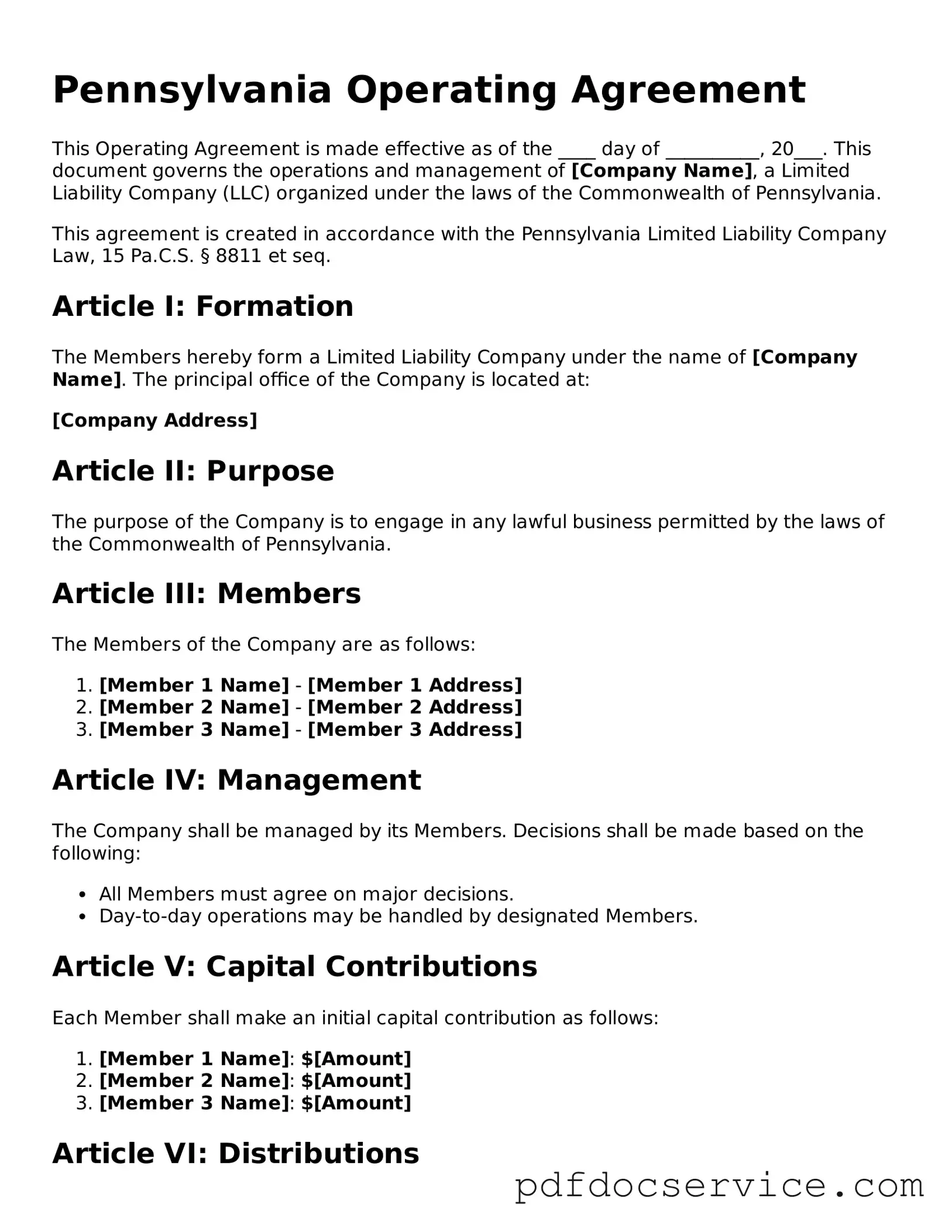What is a Pennsylvania Operating Agreement?
A Pennsylvania Operating Agreement is a crucial document for Limited Liability Companies (LLCs) operating in the state. It outlines the management structure, ownership percentages, and operational procedures of the LLC. While not required by law, having an Operating Agreement is highly recommended as it helps clarify the roles and responsibilities of members, reducing the potential for disputes in the future.
Why should I create an Operating Agreement for my LLC?
Creating an Operating Agreement provides several benefits:
-
Clarity:
It clearly defines the rights and duties of each member, which helps prevent misunderstandings.
-
Flexibility:
Members can customize the agreement to suit their specific needs and goals.
-
Protection:
An Operating Agreement can protect your limited liability status by demonstrating that your LLC is a separate entity from its owners.
-
Dispute Resolution:
The agreement can outline procedures for resolving conflicts among members, providing a clear path forward.
What should be included in a Pennsylvania Operating Agreement?
While the specifics can vary, a comprehensive Operating Agreement typically includes:
-
Member Information:
Names and addresses of all members.
-
Management Structure:
Whether the LLC will be member-managed or manager-managed.
-
Capital Contributions:
Details about the initial contributions of each member and any future contributions.
-
Profit and Loss Distribution:
How profits and losses will be allocated among members.
-
Voting Rights:
Information on how decisions will be made and what constitutes a quorum.
-
Amendments:
Procedures for modifying the Operating Agreement in the future.
Is an Operating Agreement legally binding?
Yes, an Operating Agreement is a legally binding contract among the members of the LLC. Once signed, it holds all parties accountable to its terms. However, it is essential to ensure that the agreement complies with Pennsylvania laws and regulations to be enforceable. If disputes arise, courts will often refer to the Operating Agreement to resolve issues, making it vital to draft a clear and comprehensive document.
Do I need a lawyer to create an Operating Agreement?
While it is not legally required to have a lawyer draft your Operating Agreement, consulting one can be beneficial. A legal professional can provide valuable insights, ensuring that your agreement meets all legal requirements and adequately addresses your specific business needs. For those comfortable with legal documents, templates are available online, but caution is advised to ensure that they comply with Pennsylvania law.
How do I update my Operating Agreement?
Updating your Operating Agreement is a straightforward process. Typically, the agreement will outline the procedure for amendments. Generally, this involves:
-
Drafting the proposed changes.
-
Obtaining consent from the required percentage of members, as specified in the agreement.
-
Documenting the changes in writing and having all members sign the updated agreement.
It is advisable to keep a record of all amendments for future reference.
